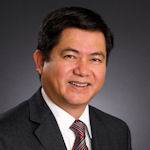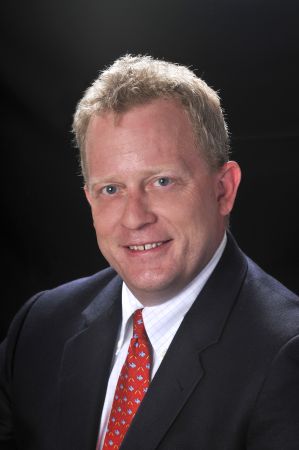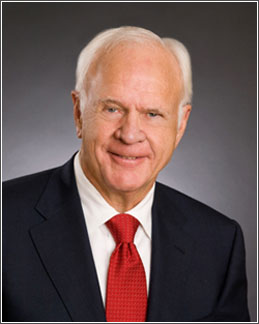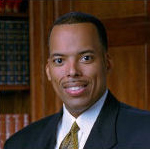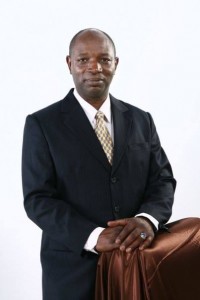The Chronicle looks at one group of voters Wendy Davis will need to excel with in order to win.

Sen. Wendy Davis
Getting Democrats – Hispanics, in particular – to the ballot box in record numbers is essential if the party hopes to compete in 2014 against a well-funded and heavily favored GOP machine.
Energizing the sluggish electorate in South Texas, a region flush with Democrats who consistently sit on the sidelines at election time, already has been pegged by party leaders and organizers as a key target.
Democrats are laying the groundwork for one of the party’s most aggressive pushes in South Texas in at least a decade.
“You’re going to see a much higher level of involvement in the region,” said Texas Democratic Party Chair Gilberto Hinojosa, a longtime politician from the area. “We know the vote that comes out of here is going to be a pretty solid Democrat vote. We just need to increase the numbers.”
The votes are there to make a difference.
In Cameron, Hidalgo and Webb counties, there are about 360,000 Latinos who are registered to vote but have cast ballots in one or fewer of the last three general elections, according to internal Democratic voter data.
The Texas Democratic Party predicted that the vast majority – a little more than 330,000 – would have voted for Democratic candidates in 2012, if they had shown up at the polls.
That is an important chunk of the approximately 2.1 million Latinos registered to vote statewide who have cast ballots in one or fewer of the last three general elections.
“South Texas is very important for anyone running statewide,” said Jenn Brown, the executive director of Battleground Texas, the state arm of the national group trying to turn the Lone Star State blue. “As a Democrat, if you can’t get South Texas to turn out, it will be very difficult to win.”
Democrats are working on their ground game in the region, with Battleground Texas having recruited hundreds of volunteers in Cameron, Hidalgo, Nueces and Webb counties.
The Texas Democratic Party recently planted a full-time field organizer in Nueces County, which voted Republican in the 2010 gubernatorial election and again in 2012. The party is planning to hire a field organizer for the Rio Grande Valley.
[…]
While the Valley is viewed as a Democratic stronghold, the key question is how many votes the region can generate. The area has been plagued by some of the lowest voter turnout percentages in the state.
In the 2010 gubernatorial election, for example, only about 23 percent of the more than 500,000 registered voters in the Rio Grande Valley cast a ballot, well below the roughly 37 percent average turnout across the state.
“I don’t think people here know the importance of voting or the power we could have if we got a big turnout,” said south Texas mega-donor Alonzo Cantu, who has been bankrolling efforts to register voters across the Rio Grande Valley. “Our goal is to get it to 65 percent this election.”
According to state data, voter turnout in the Rio Grande Valley jumped to 44 percent during the 2012 presidential election, which tends to drive participation. In Webb County, an additional 20,000 voters also cast ballots in 2012 compared with two years earlier.
We all know the basic outline of this narrative. Democrats need to boost their base turnout, lots of Latinos don’t vote, etc etc etc. Note that there is polling data to suggest that low-propensity Latino voters are more heavily Democratic than Latinos as a whole, so boosting turnout is a clear win, if it can be done. We’ll know in another thirteen months how the experiment turns out.
What I liked about that article was the numbers, which gave some context to what was possible with this particular prong of the Davis strategy. This DMN story about targeting suburban women – which is to say, white women – does have some numbers, but not as many.
Democrats believe, pointing to polls, that white female voters who’ve been in a long-term relationship with Republican candidates are slowly eyeing alternatives as the GOP moves further and further right. They see hope in the emotional tug of a Davis candidacy talking about health care, education, and leaders who disregard their voices.
Certainly, they were the target for Davis’ message as she began her 2014 campaign last week. Davis strategists hope that an emphasis on health care, education and a business-friendly posture will give her an edge. But counting on Republican-leaning women to abandon the low-tax, small-government comfort of their own party is probably wishful wooing, many pollsters and strategists say.
In the last four elections for governor, the Republicans — George W. Bush and Rick Perry — have won the women’s votes by no fewer than 7 percentage points.
While minority female voters are strongly Democratic, they make up about 15 percent of the electorate. White female voters are 33 percent of all voters, and they have gone overwhelmingly Republican in Texas.
Analysis by Stefan Hankin — a Washington-based Democratic strategist who helped in President Barack Obama’s victories — shows that even under the “rosiest scenario” of historically unexpected high percentages of minorities streaming to the polls, Davis would still fall below 49 percent of the vote.
“The numbers show that in Texas, even the most ideal Democratic candidate with the most ideal turnout will still likely fall short of victory,” Hankin wrote for Washington Monthly.
[…]
Texas Democratic strategist [Jason] Stanford said that to win, Davis will need to do much better among white voters altogether — going from the 29 percent that 2010 Democratic nominee Bill White won, to 40 percent.
“My analysis is that the only way to do that is with suburban women, because the suburbs are where all the white people are, and the women are the ones listening to us,” Stanford said.
In 2010, White took five of the state’s largest counties: Harris, Dallas, Bexar, El Paso and Travis. But Rick Perry clobbered him in Collin, Williamson and Denton counties, and other vote-rich suburbs throughout the state, enough to win comfortably overall.
Stanford points to recent polls showing Davis having 35 percent of support among white women, “which would be revolutionary,” he said. Another poll had Davis and Abbott virtually tied among female voters.
I’ve already pointed out the flaw in Hankin’s analysis. As for Stanford, I agree that increasing the Democratic share among Anglo voters would make a huge difference, but if 40% is needed then getting to 35% among white women, whom we all agree will be more open to Davis’ pitch, isn’t going to cut it. Davis will need a majority, or close to it, among Anglo women to be in a position to win. How much slack she has on that will depend in part on how well she and the Dems are doing at turning out Latino voters. Texpatriate has more.

